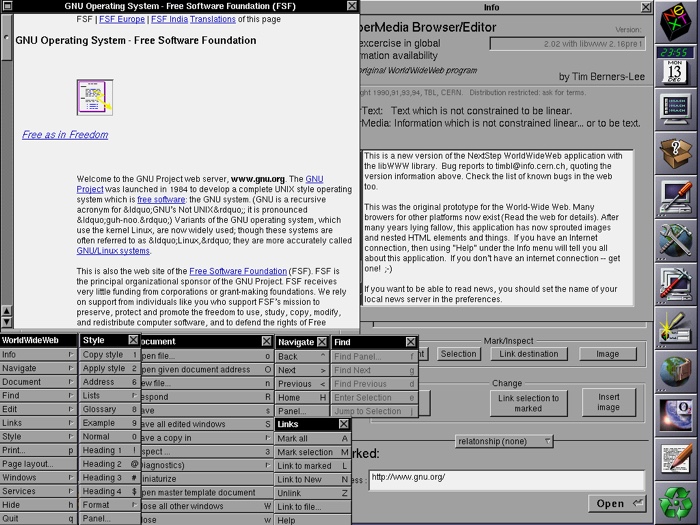Isn’t Internet explorer the worlds first web browser? It’s been there for years, ever since I started using the Internet.
Claire Hill
No, Internet explorer wasn’t the first web browser. It also wasn’t the first Windows browser. (Surprising, right?) In fact, it appeared on the scene much much later – almost 4.5 years after the birth of the Wold Wide Web. And as you can understand, there had been several browsers before it.
Sponsored Links
The World Wide Web was invented by Sir Tim Berners-Lee at CERN, a high-end physics facility situated on the borders of France and Switzerland.
Yes! The web was born in an academic institution. Sir Tim not only made the world’s first browser, but also the first web server, the first WYSIWYG HTML editor and created the world’s first web site.
It all started when Berners-Lee joined CERN as a consulting researcher. He was given two NeXT workstation computers (NeXTcubes) for the lab. It was on these machines that he developed the world’s first web browser and the very first web server.
What is the world’s first web browser?
The world’s first web browser was called… drum roll, please… WorldWideWeb. And contrary to what you may assume, the program was quite advanced. It could not only display webpages but also served as a WYSIWYG editor. It had support for basic style sheets and could download and open any files supported by the NeXTSTEP, the NeXT operating system. Images were originally displayed in a separate window, though, in later versions, they were shown inline.
Here is a screenshot of the WorldWideWeb, the world’s first web browser.

How the browser got its name is an interesting story. Berners-Lee’s project received great support from many people at CERN, especially Robert Cailliau. After a brainstorming session, they settled on World-Wide-Web (the hyphens were later removed). Cailliau found the name difficult to pronounce in French, but it was the best from the alternatives – Information Mesh, The Information Mine and Mine of Information.
The one problem with the world’s first web browser was that it ran only on the NeXT platform. Sir Tim realised that for the world wide web to become popular, browsers had to be created for other operating systems. Enter Nicola Pellow, then an undergraduate math student, who had joined the WWW Project at CERN. She developed the Line Mode Browser which was ported to several platforms from Unix to MS DOS. Line Mode (also known as LMB) was, thus, the first multi-platform browser. Pellow also worked with Robert Cailliau on the first web browser for the Mac, the MacWWW.
Later, when the world wide web became popular, the first web browser was renamed to Nexus to differentiate between the network and the program.
The NeXT Computers
The NeXTcubes on which the World Wide Web was invented were from NeXT Computer Inc., a company that Steve Jobs had set up after resigning from Apple in 1985. The machines ran a Unix-like operating system called NeXTSTEP. Though he didn’t have a direct hand in the actual development, we can safely say that the WWW was invented on Steve Jobs’ company computers.
The original hardware and software that “ran” the World Wide Web still exists at CERN. The two NeXT computers are of historical value and their hard drives may still have the original code of the WWW. Unfortunately, a few things have been lost to time including the very first web site that was put up by Sir Tim Berners-Lee on 20th December 1990.
Test your knowledge – take the quick web browser quiz.